Contents
Page List
Guide
CYBERSPACE IN PEACE AND WAR
TITLES IN THE SERIES
The Other Space Race: Eisenhower and the Quest for Aerospace Security
An Untaken Road: Strategy, Technology, and the Mobile Intercontinental Ballistic Missile
Strategy: Context and Adaptation from Archidamus to Airpower
Cassandra in Oz: Counterinsurgency and Future War
Cyberspace in Peace and War
Limiting Risk in Americas Wars: Airpower, Asymmetrics, and a New Strategic Paradigm
Always at War: Organizational Culture in Strategic Air Command, 194662
How the Few Became the Proud: Crafting the Marine Corps Mystique, 18741918
Assured Destruction: Building the Ballistic Missile Culture of the U.S. Air Force
Mars Adapting: Military Change during War
TRANSFORMING WAR
Paul J. Springer, editor
To ensure success, the conduct of war requires rapid and effective adaptation to changing circumstances. While every conflict involves a degree of flexibility and innovation, there are certain changes that have occurred throughout history that stand out because they fundamentally altered the conduct of warfare. The most prominent of these changes have been labeled Revolutions in Military Affairs (RMAs). These so-called revolutions include technological innovations as well as entirely new approaches to strategy. Revolutionary ideas in military theory, doctrine, and operations have also permanently changed the methods, means, and objectives of warfare.
This series examines fundamental transformations that have occurred in warfare. It places particular emphasis upon RMAs to examine how the development of a new idea or device can alter not only the conduct of wars but their effect upon participants, supporters, and uninvolved parties. The unifying concept of the series is not geographical or temporal; rather, it is the notion of change in conflict and its subsequent impact. This has allowed the incorporation of a wide variety of scholars, approaches, disciplines, and conclusions to be brought under the umbrella of the series. The works include biographies, examinations of transformative events, and analyses of key technological innovations that provide a greater understanding of how and why modern conflict is carried out, and how it may change the battlefields of the future.
CYBERSPACE IN PEACE AND WAR
SECOND EDITION
Martin C. Libicki
Naval Institute Press Annapolis, Maryland
This book has been brought to publication with the generous assistance of Marguerite and Gerry Lenfest.
Naval Institute Press
291 Wood Road
Annapolis, MD 21402
2021 by Martin C. Libicki
All rights reserved. No part of this book may be reproduced or utilized in any form or by any means, electronic or mechanical, including photocopying and recording, or by any information storage and retrieval system, without permission in writing from the publisher.
Library of Congress Cataloging-in-Publication Data
Names: Libicki, Martin C., author.
Title: Cyberspace in peace and war / Martin C. Libicki.
Description: 2nd edition. | Annapolis, Maryland : Naval Institute Press, [2021] | Series: Transforming war | Includes bibliographical references and index.
Identifiers: LCCN 2021027755 (print) | LCCN 2021027756 (ebook) | ISBN 9781682475867 (hardcover) | ISBN 9781682476178 (ebook) | ISBN 9781682476178 (epub)
Subjects: LCSH: Cyberspace operations (Military science) | CyberspaceSecurity measures. | CyberterrorismPrevention. | Information warfare. | Computer security.
Classification: LCC U167.5.C92 L53 2021 (print) | LCC U167.5.C92 (ebook) | DDC 355.4dc23
LC record available at https://lccn.loc.gov/2021027755
LC ebook record available at https://lccn.loc.gov/2021027756
 Print editions meet the requirements of ANSI/NISO z39.48-1992 (Permanence of Paper).
Print editions meet the requirements of ANSI/NISO z39.48-1992 (Permanence of Paper).
Printed in the United States of America.
29 28 27 26 25 24 23 22 219 8 7 6 5 4 3 2 1
First printing
Contents
Illustrations
TABLES
FIGURES
Acronyms and Abbreviations

AI | artificial intelligence |
APT | advanced persistent threat |
ASLR | address space layout randomization |
ATM | asynchronous transfer mode |
BDA | battle damage assessment |
BGP | Border Gateway Protocol |
BIOS | basic input-output system |
C4SRTA | command, control, communications, computers, intelligence, surveillance, reconnaissance, and target acquisition |
CBM | confidence-building measure |
CIA | Central Intelligence Agency |
CISO | chief information security officer |
CYBERCOM | Cyber Command |
DDOS | distributed denial-of-service (attack) |
DEFCON | defense condition |
DHS | Department of Homeland Security |
DNC | Democratic National Committee |
DNS | Domain Name System |
DoD | Department of Defense |
EMCE | economically motivated cyberespionage |
FBI | Federal Bureau of Investigation |
FSB | Federal Security Service [Russia] |
GAO | Government Accountability Office |
GGE | Group of Government Experts |
HTML | hypertext markup language |
HTTPS | hypertext transfer protocolsecure |
IADS | integrated air defense system |
INEW | integrated network and electronic warfare |
INFOCON | information (operations) condition |
iOS | iPhone operating system |
IoT | Internet of Things |
IP | Internet Protocol |
IRS | Internal Revenue Service |
ISP | Internet service provider |
ITU | International Telecommunication Union |
LOAC | law of armed conflict |
MFA | multifactor authentication |
NATO | North Atlantic Treaty Organization |

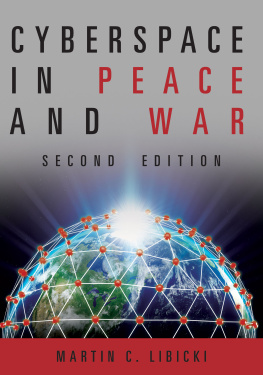
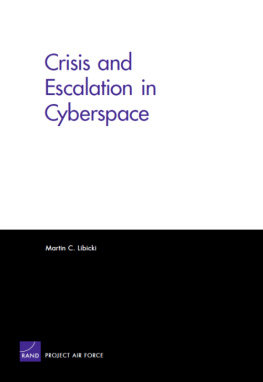
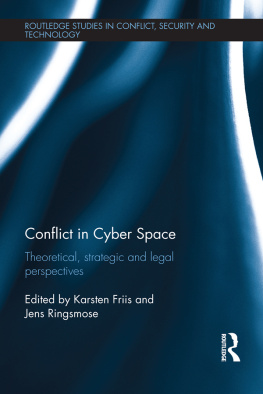
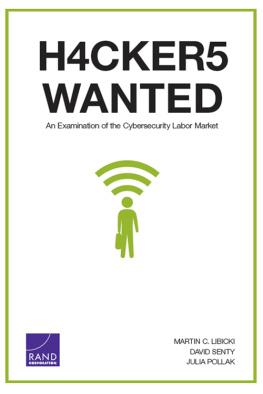
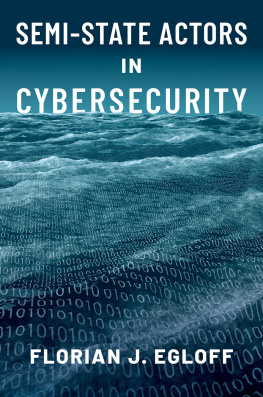


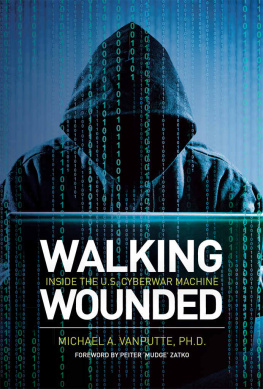
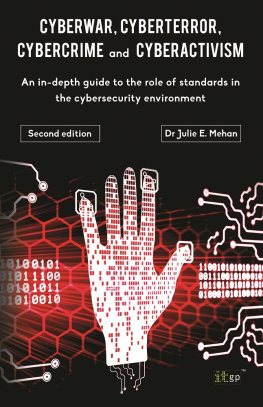

 Print editions meet the requirements of ANSI/NISO z39.48-1992 (Permanence of Paper).
Print editions meet the requirements of ANSI/NISO z39.48-1992 (Permanence of Paper).